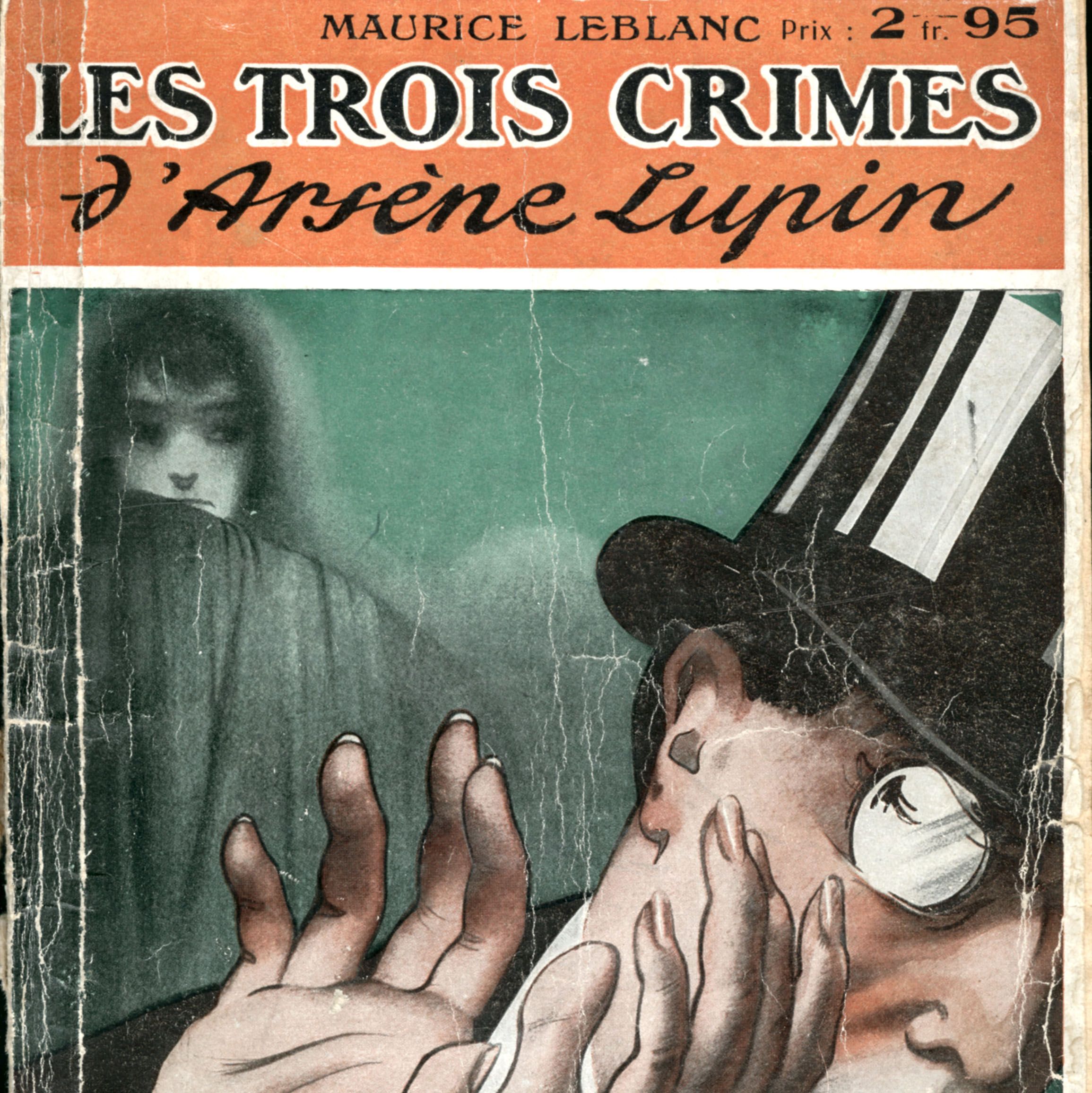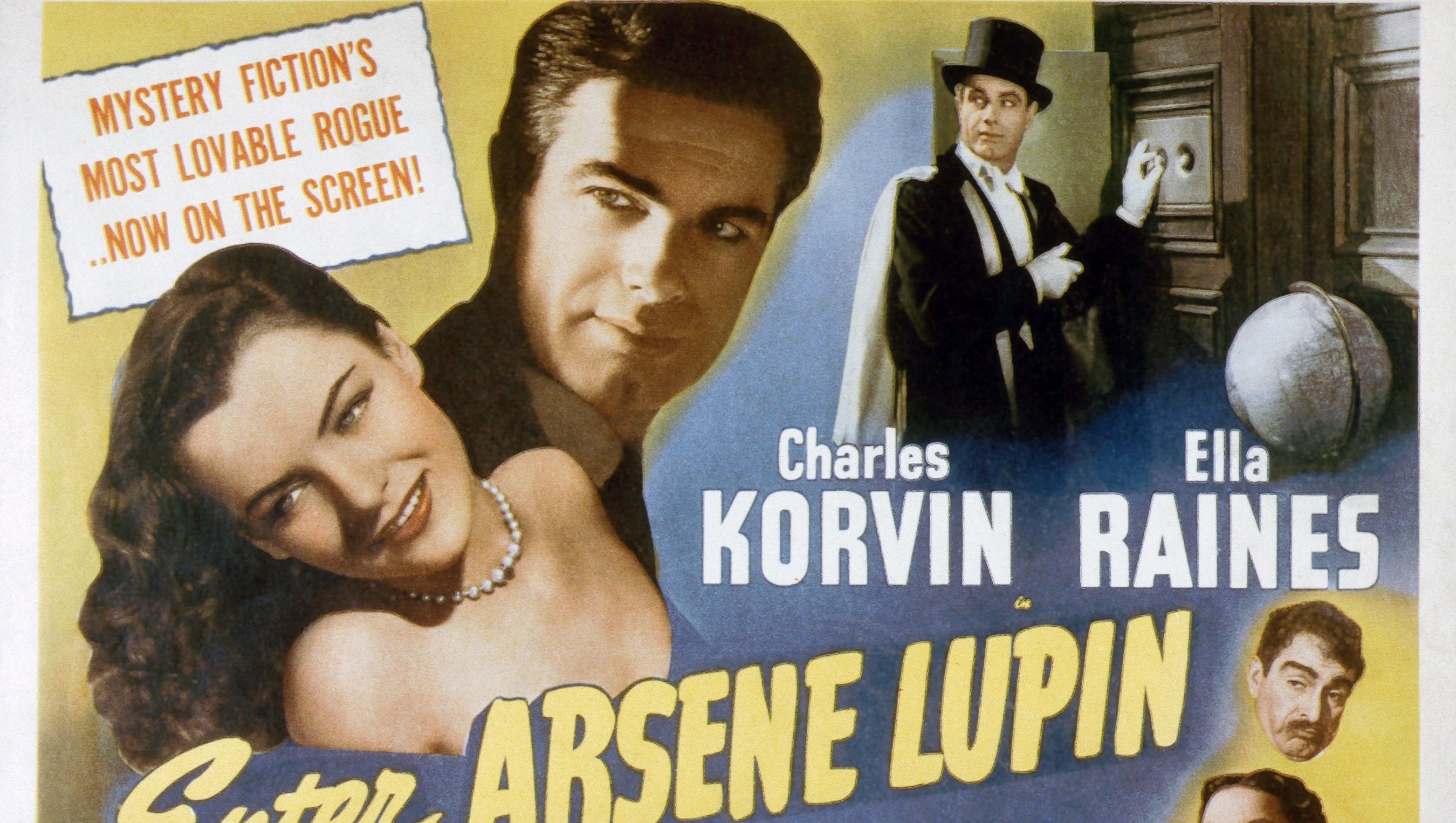Netflix's 'Lupin' Is a Riff on Maurice Leblanc's Classic 'Gentleman Burglar'
The real Arsène is more than 100 years old.

Throughout the U.S. and U.K., the characters most famous for pulling off heists while sporting dapper three-piece suits and ambiguous morals are James Bond and Danny Ocean, both of whom made their pop culture debuts in the mid-1900s. In France, however, that title is easily overtaken by one Arsène Lupin, a gentleman thief who was first introduced by author Maurice Leblanc in 1905. Though he shares a love of exquisite tailoring and skills of seduction with his English-speaking counterparts, Lupin is also witty enough to outsmart Sherlock Holmes (something he did on multiple occasions) and is a master of disguise with the ability to slip in and out of dangerous and high-pressure situations unnoticed.
After more than a century of being best known primarily throughout Francophone nations, Lupin is finally getting the global recognition he deserves thanks to Lupin, the new mystery-comedy series on Netflix that follows Assane Diop (played by Omar Sy), a gentleman burglar taking cues from Leblanc's novels to conduct a series of heists. Beyond making its intentions very clear in the title, the series is further filled with explicit references to the original Lupin books: Most of Diop's pseudonyms are anagrams of Lupin's name, all of his capers mirror Lupin's own heists, and Diop even brings his son to a seaside festival celebrating the elusive thief.
So, while you wait for the next episodes of Lupin to arrive on Netflix and keep trying to puzzle out just how Diop pulls off his many stunts, here's everything you need to know about the series' literary inspiration.
Lupin appears in more than 20 books.
After introducing his "gentleman-cambrioleur" in the short story "The Arrest of Arsène Lupin," serialized in Je sais tout magazine in 1905, Leblanc went on to publish a total of 17 novels and 39 novellas about Lupin's escapades. The stories were compiled into a total of 24 books published between 1907 and 1941. A 25th installment, The Last Love of Arsène Lupin, was released posthumously in 2011 after being discovered by a descendant of Leblanc more than 70 years after the French author wrote it.
Additionally, in the 1970s, Leblanc's estate granted permission to renowned mystery writing duo Boileau-Narcejac to publish five more novels documenting Lupin's gentleman thievery. He's also appeared in dozens more unauthorized novels, children's books, plays, comics, and even video games.

Though Netflix's Lupin draws inspiration from the legendary character's antics across Leblanc's entire catalogue, several major plot points are borrowed directly from Leblanc's first compilation of short stories, 1907's Arsène Lupin, Gentleman Burglar—which is also the book that Diop's father gives him as a child, and which he passes on to his own son. That collection includes stories about a necklace that once belonged to Marie Antoinette, Lupin's time in and shockingly easy escape from prison, and a "mysterious traveler" who accosts Lupin on a train—sound familiar?
Lupin isn't the first onscreen adaptation of Leblanc's stories.
As evidenced by the approximately one million Bond movies that have been made in the last 60 years, viewers have a thing for heist movies. It makes sense, then, that a heist expert like Lupin would have been brought to life onscreen many times in his nearly 116 years of existence. The first film adaptation of Lupin's mischievous ways arrived shockingly quickly after the character was introduced: in the 1908 black and white silent film The Gentleman Burglar. Twenty-two more Lupin films followed, with adaptations coming from France, Japan, Germany, Mexico, and the U.K.
Stay In The Know
Get exclusive access to fashion and beauty trends, hot-off-the-press celebrity news, and more.
Though the first-ever Lupin film was made in the U.S., further stateside adaptations have been scarce. The most recent was 1944's Enter Arsène Lupin, starring Charles Korvin in the lead role. An earlier American take on Leblanc's character, 1932's Arsène Lupin, featured John Barrymore (grandfather of Drew) as the gentleman thief.

Lupin is also no stranger to TV, having appeared in his first hourlong series in France in the early 1970s. Other shows have been produced in the Philippines and Japan. The 2021 Netflix series marks the first time a French show has held the #1 spot on the streamer's top 10 list in the U.S.
Arsène Lupin is a French icon.
Clearly, Lupin means quite a bit to many people around the world. Sy, who plays Lupin in the new series, shared as much in a recent interview with Variety. When asked about his dream role, Sy said, "If I was English I would say James Bond, but Lupin is the best character for that: He's fun, funny, very elegant; there is action. Lupin is just the perfect character to cross [off] everything on the bucket list. You can do everything with that character. It is the perfect role."
Sy also described just how ubiquitous Lupin was while he was growing up in France—even though he wasn't really a fan until he began working on the show. As he told Variety, "Lupin is so French that you cannot grow up in France and not know who is Arsène Lupin."
Andrea Park is a Chicago-based writer and reporter with a near-encyclopedic knowledge of the extended Kardashian-Jenner kingdom, early 2000s rom-coms and celebrity book club selections. She graduated from the Columbia School of Journalism in 2017 and has also written for W, Brides, Glamour, Women's Health, People and more.
-
 'Bad Influence' Charts the Demise of a Popular Social Media Squad—Here's Where the Kidfluencers Are Now
'Bad Influence' Charts the Demise of a Popular Social Media Squad—Here's Where the Kidfluencers Are NowThe names in the Netflix docuseries have fallen out of touch with subject Piper Rockelle.
By Quinci LeGardye Published
-
 What's Your Olfactory Personality?
What's Your Olfactory Personality?Curating your scent style infuses individualism into a perfume wardrobe.
By Samantha Holender Published
-
 The Future Queen of Norway Trades Camo Fatigues For a 125-Year-Old Tiara and Her Mom's Old Evening Gown
The Future Queen of Norway Trades Camo Fatigues For a 125-Year-Old Tiara and Her Mom's Old Evening GownSomething old, something new, something borrowed, something blue.
By Kristin Contino Published
-
 Where Are the Members of The Squad From 'Bad Influence: The Dark Side of Kidfluencing' Now?
Where Are the Members of The Squad From 'Bad Influence: The Dark Side of Kidfluencing' Now?The names in the Netflix docuseries have fallen out of touch with subject Piper Rockelle.
By Quinci LeGardye Published
-
 Where Is Piper Rockelle Now? What We Know About the Subject of 'Bad Influence: The Dark Side of Kidfluencing'
Where Is Piper Rockelle Now? What We Know About the Subject of 'Bad Influence: The Dark Side of Kidfluencing'The documentary examines a kidluencing empire and the lawsuit against it.
By Quinci LeGardye Published
-
 Who Won 'Million Dollar Secret?' All About Winner Cara Kies
Who Won 'Million Dollar Secret?' All About Winner Cara KiesHere's what to know about the In-N-Out line cook who took home the prize pot.
By Quinci LeGardye Published
-
 Sydnee Falkner Is More Than the 'Million Dollar Secret' Mean Girl
Sydnee Falkner Is More Than the 'Million Dollar Secret' Mean GirlThe reality star dishes on everything from her regrets and the finale to what you didn’t see on-screen in Netflix’s latest hit.
By Quinci LeGardye Published
-
 'Pulse' Season 2: Everything We Know
'Pulse' Season 2: Everything We KnowWe need to know about the future of the central will-they-won't-they STAT.
By Quinci LeGardye Published
-
 Meet the Cast of 'Pulse'
Meet the Cast of 'Pulse'We would trust the doctors at Maguire Medical Center with our lives.
By Quinci LeGardye Published
-
 Meet the Cast of 'Love on the Spectrum' Season 3
Meet the Cast of 'Love on the Spectrum' Season 3Netflix's Emmy-winning dating show returns with both fan-favorite couples and standout newcomers.
By Quinci LeGardye Published
-
 Who Is the 'Million Dollar Secret' Host? Meet Peter Serafinowicz
Who Is the 'Million Dollar Secret' Host? Meet Peter SerafinowiczIt's safe to say we're now obsessed with the British comedian keeping The Stag in order.
By Quinci LeGardye Published